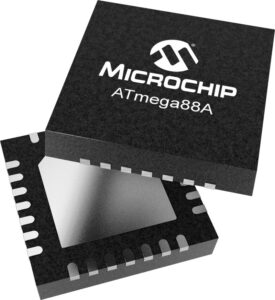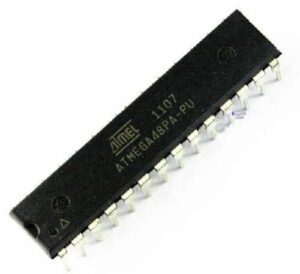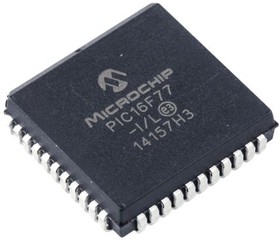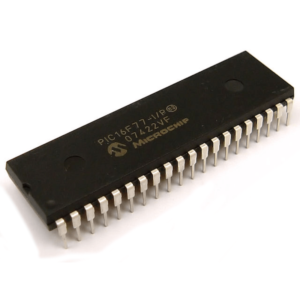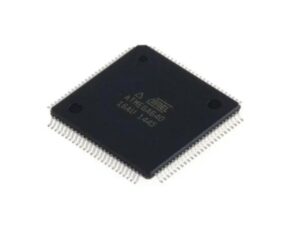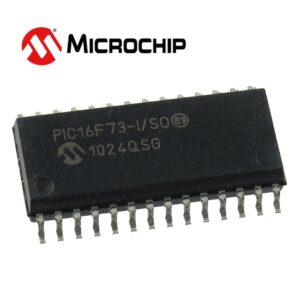Archive for the ‘Recover Chip’ Category
 Recover Chip ATmega88PV Firmware
Recover Chip ATmega88PV Firmware
Recover Chip ATmega88PV Firmware from MCU ATmega88PV flash memory and eeprom memory, remove the encryption over the microcontroller ATmega88PV by unlocking MCU protection and extract heximal from MCU memory;
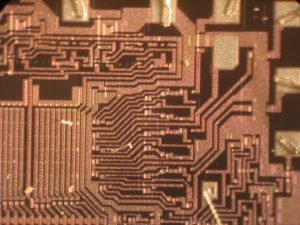
Recover Chip ATmega88PV Firmware from MCU ATmega88PV flash memory and eeprom memory, remove the encryption over the microcontroller ATmega88PV by unlocking MCU protection and extract heximal from MCU memory
The 16-bit comparator continuously compares TCNTn with the Output Compare Register (OCRnx). If TCNT equals OCRnx the comparator signals a match. A match will set the Output Compare Flag (OCFnx) at the next timer clock cycle. If enabled (OCIEnx = 1), the Output Compare Flag generates an Output Compare interrupt.
The OCFnx Flag is automatically cleared when the interrupt is executed. Alternatively the OCFnx Flag can be cleared by software by writing a logical one to its I/O bit location. The Waveform Generator uses the match signal to generate an output according to operating mode set by the Waveform Generation mode (WGMn3:0) bits and Compare Output mode (COMnx1:0) bits.
The TOP and BOTTOM signals are used by the Waveform Generator for handling the special cases of the extreme values in some modes of operation.
A special feature of Output Compare unit A allows it to define the Timer/Counter TOP value (i.e., counter resolution). In addition to the counter resolution, the TOP value defines the period time for waveforms generated by the Waveform Generator.
Figure 52 shows a block diagram of the Output Compare unit. The small “n” in the register and bit names indicates the device number (n = n for Timer/Counter n) to break out microcontroller atmega48p heximal file of flash memory, and the “x” indicates Output Compare unit (A/B/C). The elements of the block diagram that are not directly a part of the Output Compare unit are gray shaded.
The OCRnx Register is double buffered when using any of the twelve Pulse Width Modulation (PWM) modes. For the Normal and Clear Timer on Compare (CTC) modes of operation, the double buffering is disabled. The double buffering synchronizes the update of the OCRnx Compare Register to either TOP or BOTTOM of the counting sequence.
The synchronization prevents the occurrence of odd-length, non-symmetrical PWM pulses, thereby making the output glitch-free. The OCRnx Register access may seem complex, but this is not case. When the double buffering is enabled, the CPU has access to the OCRnx Buffer Register, and if double buffering is disabled the CPU will access the OCRnx directly.
The content of the OCR1x (Buffer or Compare) Register is only changed by a write operation (the Timer/Counter does not update this register automatically as the TCNT1 and ICR1 Register). Therefore OCR1x is not read via the high byte temporary register (TEMP). However, it is a good practice to read the low byte first as when accessing other 16-bit registers to copy ic mcu atmega8l heximal program. Writing the OCRnx Registers must be done via the TEMP Register since the compare of all 16 bits is done continuously.
The high byte (OCRnxH) has to be written first. When the high byte I/O location is written by the CPU, the TEMP Register will be updated by the value written. Then when the low byte (OCRnxL) is written to the lower eight bits, the high byte will be copied into the upper 8-bits of either the OCRnx buffer or OCRnx Compare Register in the same system clock cycle.
 Recover IC ATmega88A Code
Recover IC ATmega88A Code
Recover IC ATmega88A Code from embedded memory, which include the flash and eeprom needs to use focus ion beam to crack the mcu atmega88a fuse bit and extract heximal from microcontroller atmega88a;
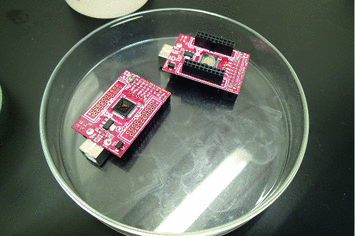
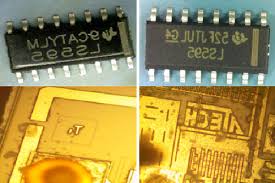
The noise canceler improves noise immunity by using a simple digital filtering scheme. The noise canceler input is monitored over four samples, and all four must be equal for changing the output that in turn is used by the edge detector.
The noise canceler is enabled by setting the Input Capture Noise Canceler (ICNCn) bit in Timer/Counter Control Register B (TCCRnB). When enabled the noise canceler introduces additional four system clock cycles of delay from a change applied to the input, to the update of the ICRn Register. The noise canceler uses the system clock and is therefore not affected by the prescaler if break atmega1284 IC flash .
The main challenge when using the Input Capture unit is to assign enough processor capacity for handling the incoming events. The time between two events is critical. If the processor has not read the captured value in the ICRn Register before the next event occurs after recover IC code, the ICRn will be overwritten with a new value. In this case the result of the capture will be incorrect.
When using the Input Capture interrupt, the ICRn Register should be read as early in the interrupt handler routine as possible. Even though the Input Capture interrupt has relatively high priority, the maximum interrupt response time is dependent on the maximum number of clock cycles it takes to handle any of the other interrupt requests after break atmega128pa mcu memory.
Using the Input Capture unit in any mode of operation when the TOP value (resolution) is actively changed during operation, is not recommended.
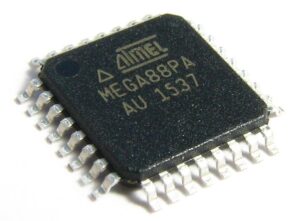
ATMEGA88PA microprocessor fuse bit breaking and readout embedded firmware of heximal file from ATMEGA88PA mcu flash memory
Measurement of an external signal’s duty cycle requires that the trigger edge is changed after each capture. Changing the edge sensing must be done as early as possible after the ICRn Register has been read.
After a change of the edge, the Input Capture Flag (ICFn) must be cleared by software (writing a logical one to the I/O bit location). For measuring frequency only, the clearing of the ICFn Flag is not required (if an interrupt handler is used).
 Reverse engineering MCU ATMEGA48PV Code
Reverse engineering MCU ATMEGA48PV Code
We can Reverse engineering MCU ATMEGA48PV Code, please view the MCU ATMEGA48PV features for your reference:
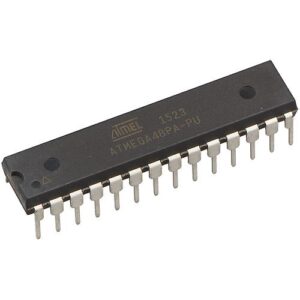
crack atmega48pa mcu fuse bit and readout microprocessor flash memory in the format of binary or heximal
When a change of the logic level (an event) occurs on the Input Capture Pin (ICPn), alternatively on the analog Comparator output (ACO), and this change confirms to the setting of the edge detector, a capture will be triggered.
When a capture is triggered, the 16-bit value of the counter (TCNTn) is written to the Input Capture Register (ICRn). The Input Capture Flag (ICFn) is set at the same system clock as the TCNTn value is copied into ICRn Register.
If enabled (TICIEn = 1), the input capture flag generates an input capture interrupt. The ICFn flag is automatically cleared when the interrupt is executed.
Alternatively the ICFn flag can be cleared by software by writing a logical one to its I/O bit location. Reading the 16-bit value in the Input Capture Register (ICRn) is done by first reading the low byte (ICRnL) and then the high byte (ICRnH).
When the low byte is read the high byte is copied into the high byte Temporary Register (TEMP). When the CPU reads the ICRnH I/O location it will access the TEMP Register.
The ICRn Register can only be written when using a Waveform Generation mode that utilizes the ICRn Register for defining the counter’s TOP value. In these cases the Waveform Generation mode (WGMn3:0) bits must be set before the TOP value can be written to the ICRn Register if Reverse engineering MCU atmega324pv Code.
When writing the ICRn Register the high byte must be written to the ICRnH I/O location before the low byte is written to ICRnL. The main trigger source for the input capture unit is the Input Capture Pin (ICPn). Timer/Counter1 can alternatively use the analog comparator output as trigger source for the input capture unit before break microcontroller atmega324a MCU Code.
The Analog Comparator is selected as trigger source by setting the analog Comparator Input Capture (ACIC) bit in the Analog Comparator Control and Status Register (ACSR). Be aware that changing trigger source can trigger a capture;
The input capture flag must therefore be cleared after the change. Both the Input Capture Pin (ICPn) and the Analog Comparator output (ACO) inputs are sampled using the same technique as for the Tn pin. The edge detector is also identical. However, when the noise canceler is enabled, additional logic is inserted before the edge detector, which increases the delay by four system clock cycles. Note that the input of the noise canceler and edge detector is always enabled unless the Timer/Counter is set in a Waveform Generation mode that uses ICRn to define TOP.
 Recover MCU Microchip CF755 Dump
Recover MCU Microchip CF755 Dump
Recover MCU Microchip CF755 Dump
We can recover MCU Microchip CF755 Dump, please view the PIC MCU features for your reference:
The PIC16C5X from Microchip Technology of recover MCU is a family of low-cost, high performance, 8-bit, fully static, EPROM/ ROM-based CMOS microcontrollers. It employs a RISC architecture with only 33 single word/single cycle instructions. All instructions are single cycle (200 ns) except for program branches which take two cycles. The PIC16C5X delivers performance an order of magnitude higher than its competitors in the same price category. The 12-bit wide instructions are highly symmetrical resulting in 2:1 code compression over other 8-bit microcontrollers in its class. The easy to use and easy to remember instruction set reduces development time significantly for recover MCU.
The PIC16C5X products are equipped with special features that reduce system cost and power requirements.
The Power-On Reset (POR) and Device Reset Timer (DRT) eliminate the need for external reset circuitry.
There are four oscillator configurations to choose from, including the power-saving LP (Low Power) oscillator and cost saving RC oscillator. Power saving SLEEP mode, Watchdog Timer and code protection features improve system cost, power and reliability.
The UV erasable CERDIP packaged versions are ideal for code development, while the cost-effective One Time Programmable (OTP) versions are suitable for production in any volume. The customer can take full advantage of Microchip’s price leadership in OTP microcontrollers while benefiting from the OTP’s flexibility after PIC MCU recovery.
The PIC16C5X products are supported by a full-featured macro assembler, a software simulator, an in-circuit emulator, a ‘C’ compiler, fuzzy logic support tools, a low-cost development programmer, and a full featured programmer. All the tools are supported on IBM® PC and compatible machines.
The PIC16C5X series fits perfectly in applications ranging from high-speed automotive and appliance motor control to low-power remote transmitters/receivers, pointing devices and telecom processors. The EPROM technology makes customizing application programs (transmitter codes, motor speeds, receiver frequencies, etc.) extremely fast and convenient. The small footprint packages, for through hole or surface mounting, make this microcontroller series perfect for applications with space limitations. Low-cost, low-power, high performance, ease of use and I/O flexibility make the PIC MCU recovery.
PIC16C5X series very versatile even in areas where no microcontroller use has been considered before (e.g., timer functions, replacement of “glue” logic in larger systems, coprocessor applications). tures that reduce system cost and power requirements.
The Power-On Reset (POR) and Device Reset Timer (DRT) eliminate the need for external reset circuitry when recover mcu.
There are four oscillator configurations to choose from, including the power-saving LP (Low Power) oscillator and cost saving RC oscillator. Power saving SLEEP mode, Watchdog Timer and code protection features improve system cost, power and reliability.
The UV erasable CERDIP packaged versions are ideal for code development, while the cost-effective One Time Programmable (OTP) versions are suitable for production in any volume. The customer can take full advantage of Microchip’s price leadership in OTP microcontrollers while benefiting from the OTP’s flexibility for pic mcu crack.
The PIC16C5X products are supported by a full-featured macro assembler, a software simulator, an in-circuit emulator, a ‘C’ compiler, fuzzy logic support tools, a low-cost development programmer, and a full featured programmer. All the tools are supported on IBM® PC and compatible machines.
 Recover Microprocessor ATMEGA1280PA Flash
Recover Microprocessor ATMEGA1280PA Flash
Recover Microprocessor ATMEGA1280PA Flash memory data file and copy the heximal program and data to new microcontroller atmega1280 flash memory and eeprom memory;
The Input Capture Register can capture the Timer/Counter value at a given external (edge triggered) event on either the Input Capture pin (ICPn) or on the Analog Comparator pins. The Input Capture unit includes a digital filtering unit (Noise Canceler) for reducing the chance of capturing noise spikes. The TOP value, or maximum Timer/Counter value, can in some modes of operation be defined by either the OCRnA Register, the ICRn Register, or by a set of fixed values.
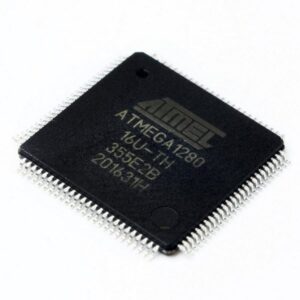
Clone mcu ATMEGA1280 flash memory program and eeprom memory data in the format of heximal or binary after reading its mcu memory
When using OCRnA as TOP value in a PWM mode, the OCRnA Register can not be used for generating a PWM output. However, the TOP value will in this case be double buffered allowing the TOP value to be changed in run time to readout ic mcu atmega1280 flash memory and eeprom memory data. If a fixed TOP value is required, the ICRn Register can be used as an alternative, freeing the OCRnA to be used as PWM output.
The TCNTn, OCRnA/B/C, and ICRn are 16-bit registers that can be accessed by the AVR CPU via the 8-bit data bus. The 16-bit register must be byte accessed using two read or write operations. Each 16-bit timer has a single 8-bit register for temporary storing of the high byte of the 16-bit access.
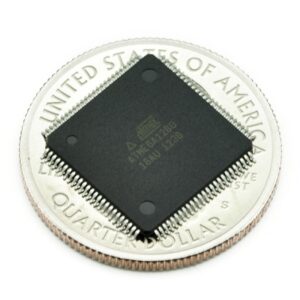
Recover Microprocessor ATMEGA1280PA Flash memory data file and copy the heximal program and data to new microcontroller atmega1280 flash memory and eeprom memory
The same Temporary Register is shared between all 16-bit registers within each 16-bit timer. Accessing the low byte triggers the 16-bit read or write operation to decoding avr mcu atmega1280 flash memory, When the low byte of a 16-bit register is written by the CPU, the high byte stored in the Temporary Register, and the low byte written are both copied into the 16-bit register in the same clock cycle.
When the low byte of a 16-bit register is read by the CPU, the high byte of the 16-bit register is copied into the Temporary Register in the same clock cycle as the low byte is read.
 Break MICROCONTROLLER ATMEGA640PA Flash
Break MICROCONTROLLER ATMEGA640PA Flash
We can Break MICROCONTROLLER ATMEGA640PA Flash, please view the MICROCONTROLLER ATMEGA640PA features for your reference:
The phase correct PWM mode (WGM02:0 = 1 or 5) provides a high resolution phase correct PWM waveform generation option. The phase correct PWM mode is based on a dual-slope operation. The counter counts repeatedly from BOTTOM to TOP and then from TOP to BOTTOM when break microcontroller flash.
TOP is defined as 0xFF when WGM2:0 = 1, and OCR0A when WGM2:0 = 5. In non-inverting Compare Output mode, the Output Compare (OC0x) is cleared on the Compare Match between TCNT0 and OCR0x while upcounting, and set on the Compare Match while down-counting if break microcontroller flash.
In inverting Output Compare mode, the operation is inverted. The dual-slope operation has lower maximum operation frequency than single slope operation. However, due to the symmetric feature of the dual-slope PWM modes, these modes are preferred for motor control applications before break microcontroller flash.
In phase correct PWM mode the counter is incremented until the counter value matches TOP. When the counter reaches TOP, it changes the count direction. The TCNT0 value will be equal to TOP for one timer clock cycle after break microcontroller flash.
The timing diagram for the phase correct PWM mode is shown on Figure 44. The TCNT0 value is in the timing diagram shown as a histogram for illustrating the dual-slope operation. The diagram includes non-inverted and inverted PWM outputs if break microcontroller flash.
The small horizontal line marks on the TCNT0 slopes represent Compare Matches between OCR0x and TCNT0. The Timer/Counter Overflow Flag (TOV0) is set each time the counter reaches BOTTOM when break microcontroller flash.
The Interrupt Flag can be used to generate an interrupt each time the counter reaches the BOTTOM value. In phase correct PWM mode, the compare unit allows generation of PWM waveforms on the OC0x pins.
Setting the COM0x1:0 bits to two will produce a non-inverted PWM. An inverted PWM output can be generated by setting the COM0x1:0 to three: Setting the COM0A0 bits to one allows the OC0A pin to toggle on Compare Matches if the WGM02 bit is set. This option is not available for the OC0B pin after break microcontroller flash.
The actual OC0x value will only be visible on the port pin if the data direction for the port pin is set as output.
The PWM waveform is generated by clearing (or setting) the OC0x Register at the Compare Match between OCR0x and TCNT0 when the counter increments, and setting (or clearing) the OC0x Register at Compare Match between OCR0x and TCNT0 when the counter decrements. The PWM frequency for the output when using phase correct PWM can be calculated by the following equation when break microcontroller flash.
 Reverse Engineering IC ATmega640A Heximal
Reverse Engineering IC ATmega640A Heximal
Reverse Engineering IC ATmega640A to learn MCU ATmega640A circuitry pattern structure, the microcontroller ATmega640A will be unlocked and the heximal inside MCU ATmega640A flash memory can be readout:
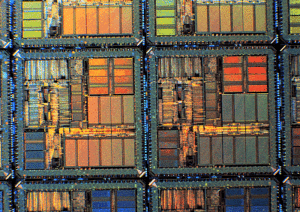
Reverse Engineering IC ATmega640A to learn MCU ATmega640A circuitry pattern structure, the microcontroller ATmega640A will be unlocked and the heximal inside MCU ATmega640A flash memory can be readout
The N variable represents the prescale factor (1, 8, 64, 256, or 1024). As for the Normal mode of operation, the TOV0 Flag is set in the same timer clock cycle that the counter counts from MAX to 0x00.
The fast Pulse Width Modulation or fast PWM mode (WGM02:0 = 3 or 7) provides a high frequency PWM waveform generation option. The fast PWM differs from the other PWM option by its single-slope operation. The counter counts from BOTTOM to TOP then restarts from BOTTOM. TOP is defined as 0xFF when WGM2:0 = 3, and OCR0A when WGM2:0 = 7.
In non-inverting Compare Output mode, the Output Compare (OC0x) is cleared on the Compare Match between TCNT0 and OCR0x, and set at BOTTOM. In inverting Compare Output mode, the output is set on Compare Match and cleared at BOTTOM before chip PIC16C62B eeprom content recovering.
Due to the single-slope operation, the operating frequency of the fast PWM mode can be twice as high as the phase correct PWM mode that use dual-slope operation.
This high frequency makes the fast PWM mode well suited for power regulation, rectification, and DAC applications. High frequency allows physically small sized external components (coils, capacitors), and therefore reduces total system cost.
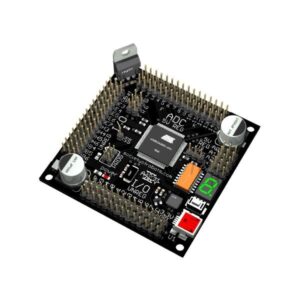
crack microcontroller ATMEGA640A fuse bit and readout source code from flash memory in the format of binary or heximal
In fast PWM mode, the counter is incremented until the counter value matches the TOP value. The counter is then cleared at the following timer clock cycle. The timing diagram for the fast PWM mode is shown in Figure 43. The TCNT0 value is in the timing diagram shown as a histogram for illustrating the single-slope operation when MCU PIC16C63A firmware recovery.
The diagram includes non-inverted and inverted PWM outputs. The small horizontal line marks on the TCNT0 slopes represent Compare Matches between OCR0x and TCNT0. The Timer/Counter Overflow Flag (TOV0) is set each time the counter reaches TOP. If the interrupt is enabled, the interrupt handler routine can be used for updating the compare value.
In fast PWM mode, the compare unit allows generation of PWM waveforms on the OC0x pins. Setting the COM0x1:0 bits to two will produce a non-inverted PWM and an inverted PWM output can be generated by setting the COM0x1:0 to three: Setting the COM0A1:0 bits to one allows the OC0A pin to toggle on Compare Matches if the WGM02 bit is set. This option is not available for the OC0B pin.
The actual OC0x value will only be visible on the port pin if the data direction for the port pin is set as output. The PWM waveform is generated by setting (or clearing) the OC0x Register at the Compare Match between OCR0x and TCNT0, and clearing (or setting) the OC0x Register at the timer clock cycle the counter is cleared (changes from TOP to BOTTOM).
 Recover MCU PIC16F77 Eeprom
Recover MCU PIC16F77 Eeprom
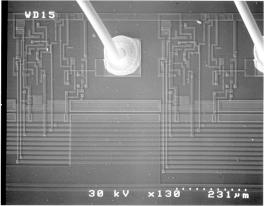
Recover MCU PIC16F77 Eeprom content and copy heximal to new Microcontroller PIC16F77 for microprocessor cloning, the status of MCU PIC16F77 will be reset from locked to unlocked one
Recover MCU PIC16F77 Eeprom content and copy heximal to new Microcontroller PIC16F77 for microprocessor cloning, the status of MCU PIC16F77 will be reset from locked to unlocked one;
Program Memory Organization:
The PIC16F7X devices have a 13-bit program counter capable of addressing an 8K word x 14-bit program memory space. The PIC16F77/76 devices have 8K words of FLASH program memory and the PIC16F73/74 devices have 4K words. The program memory maps for PIC16F7X devices are shown in Figure 2-1. Accessing a location above the physically implemented address will cause a wraparound. in the PICmicro Mid-Range Reference Manual.
The 28-pin devices have 11 interrupts, while the 40/44-pin devices have 12
· The 28-pin devices have 5 A/D input channels, while the 40/44-pin devices have 8
· The Parallel Slave Port is implemented only on the 40/44-pin devices
The RESET Vector is at 0000h and the Interrupt Vector is at 0004h after Microcontroller PIC18F66K90 heximal attacking
Each bank extends up to 7Fh (128 bytes). The lower locations of each bank are reserved for the Special Function Registers. Above the Special Function Registers are General Purpose Registers, implemented as
static RAM. All implemented banks contain Special
Function Registers. Some frequently used Special
Function Registers from one bank may be mirrored in
another bank for code reduction and quicker access. implemented address will cause a wraparound. in the PICmicro Mid-Range Reference Manual
The 28-pin devices have 11 interrupts, while the 40/44-pin devices have 12
· The 28-pin devices have 5 A/D input channels, while the 40/44-pin devices have 8
· The Parallel Slave Port is implemented only on the 40/44-pin devices.
 Reverse Engineering MCU ATMEGA640P Flash
Reverse Engineering MCU ATMEGA640P Flash
Reverse Engineering MCU ATmega640P to figure out the location of security fuse bit of Microcontroller ATmega640P by MCU cracking technique, then extract code from microcontroller ATmega640P Flash memory;
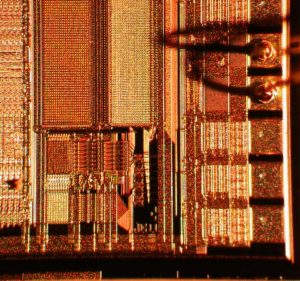
Reverse Engineering MCU ATMEGA640P to figure out the location of security fuse bit of Microcontroller ATmega640P by MCU cracking technique, then extract code
The Compare Output mode (COM0x1:0) bits have two functions. The Waveform Generator uses the COM0x1:0 bits for defining the Output Compare (OC0x) state at the next Compare Match. Also, the COM0x1:0 bits control the OC0x pin output source. Figure 41 shows a simplified schematic of the logic affected by the COM0x1:0 bit setting if MCU ATmega644 code recovering.
The I/O Registers, I/O bits, and I/O pins in the figure are shown in bold. Only the parts of the general I/O Port Control Registers (DDR and PORT) that are affected by the COM0x1:0 bits are shown. When referring to the OC0x state, the reference is for the internal OC0x Register, not the OC0x pin. If a system reset occur, the OC0x Register is reset to “0”.
The general I/O port function is overridden by the Output Compare (OC0x) from the Waveform Generator if either of the COM0x1:0 bits are set. However, the OC0x pin direction (input or output) is still controlled by the Data Direction Register (DDR) for the port pin. The Data Direction Register bit for the OC0x pin (DDR_OC0x) must be set as output before the OC0x value is visible on the pin. The port override function is independent of the Waveform Generation mode.
The design of the Output Compare pin logic allows initialization of the OC0x state before the output is enabled. Note that some COM0x1:0 bit settings are reserved for certain modes of operation. See “8-bit Timer/Counter Register Description”.
The Waveform Generator uses the COM0x1:0 bits differently in Normal, CTC, and PWM modes. For all modes, setting the COM0x1:0 = 0 tells the Waveform Generator that no action on the OC0x Register is to be performed on the next Compare Match.
For compare output actions in the non-PWM modes refer to Table 70 on page 128. For fast PWM mode, refer to Table 71 on page 128, and for phase correct PWM refer to Table 72 on page 129. A change of the COM0x1:0 bits state will have effect at the first Compare Match after the bits are written. For non-PWM modes, the action can be forced to have immediate effect by using the FOC0x strobe bits.
 Recover MCU PIC16F73 Binary
Recover MCU PIC16F73 Binary
Recover MCU PIC16F73 Binary from flash memory and data extracted from eeprom memory of Microcontroller, reprogramme the firmware into blank MCU PIC16F73 for Microprocessor cloning;
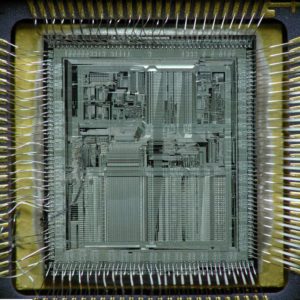
Recover MCU PIC16F73 Binary from flash memory and data extracted from eeprom memory of Microcontroller, reprogramme the firmware into blank MCU PIC16F73 for Microprocessor cloning
High Performance RISC CPU:
· High performance RISC CPU
· Only 35 single word instructions to learn
· All single cycle instructions except for program branches which are two-cycle
· Operating speed: DC – 20 MHz clock input DC – 200 ns instruction cycle
· Up to 8K x 14 words of FLASH Program Memory, Up to 368 x 8 bytes of Data Memory (RAM)
· Pinout compatible to the PIC16C73B/74B/76/77
· Pinout compatible to the PIC16F873/874/876/877
· Interrupt capability (up to 12 sources)
· Eight level deep hardware stack
· Direct, Indirect and Relative Addressing modes
· Processor read access to program memory
Special Microcontroller Features:
· Power-on Reset (POR)
· Power-up Timer (PWRT) and
Oscillator Start-up Timer (OST)
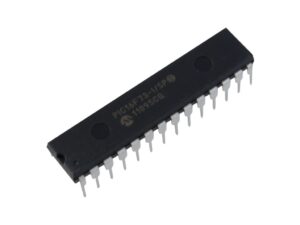
unlock PIC16F73 microprocessor fuse bit and open mcu flash memory and eeprom memory to readout heximal program and binary data
· Watchdog Timer (WDT) with its own on-chip RC oscillator for reliable operation
· Programmable code protection
· Power saving SLEEP mode
· Selectable oscillator options
· In-Circuit Serial Programming (ICSP) via two pins
Peripheral Features:
· Timer0: 8-bit timer/counter with 8-bit prescaler
· Timer1: 16-bit timer/counter with prescaler, can be incremented during SLEEP via external crystal/clock
· Timer2: 8-bit timer/counter with 8-bit period register, prescaler and postscaler
· Two Capture, Compare, PWM modules if Recover mcu binary
– Capture is 16-bit, max. resolution is 12.5 ns
– Compare is 16-bit, max. resolution is 200 ns
– PWM max. resolution is 10-bit
· 8-bit, up to 8-channel Analog-to-Digital converter
· Synchronous Serial Port (SSP) with SPI (Master mode) and I2C (Slave)
· Universal Synchronous Asynchronous Receiver Transmitter (USART/SCI)
· Parallel Slave Port (PSP), 8-bits wide with external RD, WR and CS controls (40/44-pin only)
· Brown-out detection circuitry for Brown-out Reset (BOR)
